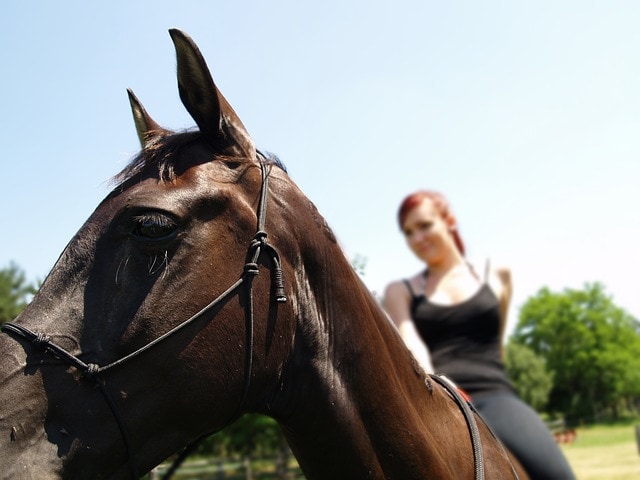As anyone who has spent any amount of time with horses will attest, these animals are rather intelligent creatures. Horses not only have a profound sense of empathy, reading emotions in their stable mates and human beings alike, but horses are even quite aware of the outside world. These creatures can pick up on verbal cues, differentiate between people and some have even mastered tasks like opening stable doors. And like all animals with such intelligence, horses have done so as a result of a very specific way of learning, resulting in habits and behaviors that lend them an edge in life. Understanding how horses learn allows trainers the chance to better communicate their training while getting a more thorough understanding of the actual animals.
Non-associative learning
According to Good Horsemanship, this is one of two primary means in which horses learn. The non-associative method refers to repeated exposure to outside stimuli: The more a horse interacts with something, the greater the chance it will understand the object or experience. Within the greater umbrella of non-associative learning, there’s a couple specific methods in which comprehension occurs:
- Sensitization: This refers to when a stimulus conditions a horse to behave in a certain way. For instance, hearing repeated loud noises from a car over a span of time would increase a horse’s sense of fear. Thus, the horse will become sensitized to the car itself.
- Habituation: Whereas sensitization is about increasing responses, habituation is all about decreasing said response. A horse that has never been brushed before would undoubtedly reacts with fear. Though the horse will continually act out for some time, repeated brushings will eventually cultivate a more positive result.
Horses of all ages, from very young foals to much older mares, will make use of non-associative learning.
Associative learning
As its name might imply, this method refers to a horse learning by making associations. There’s effectively two categories for this method, and both involve forming these close associations in either time or space. Classical conditioning is when a horse creates an association based on two or more signals. For instance, if you whistle every time you feed the horses, the animal would be conditioned to associate food with that very sound. Operant conditioning, meanwhile, explains how a horse makes associations with certain outcomes. If a horse bumps into an unlocked door and is freed from the stable, it might continue to bump into that door, even after it’s locked, because it believes that’ll always be a viable exit.
Examples of associative learning include:
- Changing leads.
- Lifting hooves for cleaning.
- The boundaries created by fences.
- Responding to vocal commands.
- Spinning under a saddle.
- General riding techniques .
Given its sheer number of applications, associative learning is often how most horses learn to interact with their world.
Positive reenforcement
There’s a number of equally effective ways to train a horse. However, it might be worthwhile to find a method that plays best to the horse’s natural strengths and limits as a learning animal. One such method is through the use of positive reinforcement. This method is quite simple: When a horse does as it’s commanded, you give it a treat. This, as you might already have guessed, creates a positive association within the horse, one that boils down simply to “listening = food.” According to a study published in the journal Animal Behaviour, this method has a number of positive effects. Horses taught using P.E. stood 50 percent longer than other horses, and those that did leave their trainers’ side never got further than a yard away.
However, there are some downsides to this method. If a horse begins to act erratically or extra excitedly before feeding, you might hurry along to calm it down. Even unintentionally, you’re still reinforcing this behavior by giving the horse what it wants. Given this dynamic, it’s important to be careful with how you approach the horse and what kind of messages you transmit with your own behavior.
A need for supplements
Often times, the use of certain supplements can aid in a horse’s continued cognitive development.
Promoting a relaxed behavior that enables a horse to focus on the task at hand is Easy Rider™. It contains an Angel Herb Blend. Angel Herb Blend is a proprietary blend of Raspberry leaf extract, Ashwagandha, Angelica sinensis, Thiamine Mononitrate (Vitamin B1), Ginger root, Passionflower extract, and Schizandra Berry.
Containing plenty of magnesium, Thia-Cal™ can help promote healthy nerve function, making the training process all that much easier.









